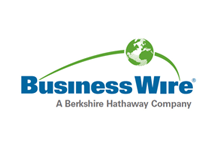Insights into the Worldwide Halogen-Free Flame Retardant Industry to 2025 - By Type, End-user, Binder System and Geography - ResearchAndMarkets.com
The "Halogen-Free Flame Retardant Market - Forecast (2020 - 2025)" report has been added to ResearchAndMarkets.com's offering.
The report gives in-depth analysis of the competitive landscape, product market sizing, product benchmarking, market trends, product developments, financial analysis, strategic analysis and so on to gauge the impact forces and potential opportunities of the market. Apart from this the report also includes a study of major developments in the market such as product launches, agreements, acquisitions, collaborations, mergers and so on to comprehend the prevailing market dynamics and its impact during the forecast period 2020-2025.
The global Halogen Free Flame Retardants market is expected to increase at a highest growth rate in the forecast period. The global consumer demand is growing with 4.5% over the forecast period. Electrical and electronics industry is the most significant end-use industry in the global halogen-free flame retardant market.
This report incorporates an in-depth assessment of halogen free flame retardants market by type, end-user, binder system, and geography. The major types of halogen free flame retardants encompassed in the scope includes phosphorous, mineral, nitrogen, nano-composites, others (zinc borate, intumescent).
Electrical/Electronics sector consumes the maximum share of 37% in the halogen free flame retardants market. The major type of flame retardants used in the industry is Bromine and Chlorine based in halogens and apart from them Nitrogen and Phosphorus based metal hydroxides are also widely used in the industry. However, electrical industry equipment is always at the risk of fire hazards caused due to human as well as other machine based errors.
Most of the engineered plastics manufactured are tie up with flame retardants to increase, the time range, thus helps to avoid health hazards and property damage. Home electrical fires account for an estimated 51,000 fires each year with more than 1,400 injuries and $1.3 billion in material damage. In the U.S., more than 28,000 home fires are recorded every year, accounting to about $700 million worth of property damage. Strict safety regulations, regarding the use of flame retardants are being imposed during the process of manufacturing this electrical equipment.
Key Takeaways from this Report
- Evaluate market potential through analyzing growth rates (CAGR %), volume (units) and value ($m). Country level data is provided based on - product types, end use applications and by different industry verticals.
- Understand the different dynamics influencing the market - key driving factors, challenges and hidden opportunities.
- Get in-depth insights on your competitors' performance - market shares, strategies, financial benchmarking, product benchmarking, SWOT and more.
- Analyze the sales and distribution channels across key geographies to improve top-line revenues.
- Understand the industry supply chain with a deep-dive on the value augmentation at each step, in order to optimize value and increase efficiency of your processes.
- Get a quick outlook on the market entropy - M&As, deals, partnerships, and product launches of all key players in the past four years.
-
Evaluate the supply-demand gaps, import-export statistics and regulatory landscape for more than 20 top countries, for the market.
Key Topics Covered:
1. Halogen Free Flame Retardants Market Overview
2. Executive Summary
3. Halogen Free Flame Retardants Market Landscape
3.1. Market Share Analysis
3.2. Comparative Analysis
4. Halogen Free Flame Retardants Market Forces
4.1. Market Drivers
4.2. Market Constraints
4.3. Market Challenges
4.4. Attractiveness of the Industry
5. Halogen Free Flame Retardants Market - Strategic Analysis
5.1. Value Chain Analysis
5.2. Pricing Analysis
5.3. Opportunities Analysis
5.4. Product/Market Life Cycle Analysis
5.5. Suppliers and Distributors
6. Halogen Free Flame Retardants Market- Type
6.1. Phosphorous
6.2. Mineral
6.3. Nitrogen
6.4. Nano-composites
6.5. Others (Zinc Borate, Intumescent)
7. Halogen Free Flame Retardants Market-By End-Users
7.1. Electrical and Electronics
7.2. Building and Construction
7.3. Chemicals
7.4. Textiles
7.5. Transportation
7.6. Furnishings
7.7. Others
8. Halogen Free Flame Retardants Market-By Binder System
8.1. Polyolefins
8.1.1. Polyethylene (PE)
8.1.2. Polypropylene
8.1.3. Ethylene propylene diene monomer (EPDM)
8.1.4. Others
8.2. Epoxy Resins
8.3. Polyesters
8.4. Polyvinyl Chloride
8.5. Rubber
8.6. Engineering Thermoplastics (ETP)
8.6.1. Polyamide
8.6.2. Polycarbonate (PC)
8.6.3. Others
8.7. Styrenic
8.8. Polyurethane (PUR)
8.9. EVA
8.10. Others
9. Halogen Free Flame Retardants Market - By Geography
9.1. Americas
9.2. Europe
9.3. APAC
9.4. ROW
10. Market Entropy
10.1. New Product Launches
10.2. M&As, Collaborations, JVs, Partnership
11. Company Profiles
11.1. Akzo Nobel (Netherlands)
11.2. Albemarle Corporation (United States)
11.3. Apexical Inc. (USA)
11.4. BASF SE (Germany)
11.5. Bayer AG (Germany)
11.6. Celanese Corporation (USA)
11.7. Chemtura Corporation Limited (USA)
11.8. Clariant AG (Switzerland)
11.9. Daihachi Chemical Industry Co. Ltd. (Osaka)
11.10. Delamin Limited (United Kingdom)
11.11. Dic Corporation (Japan)
11.12. Dover Chemical Corp. (United States)
11.13. DowDuPont (United States)
11.14. DSM N.V. (Netherlands)
12. Appendix
For more information about this report visit https://www.researchandmarkets.com/r/7utpzf
View source version on businesswire.com: https://www.businesswire.com/news/home/20200514005457/en/




